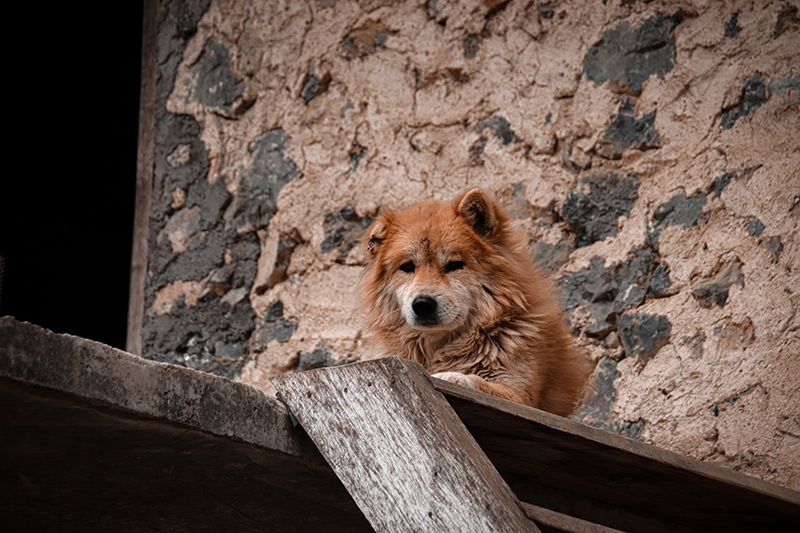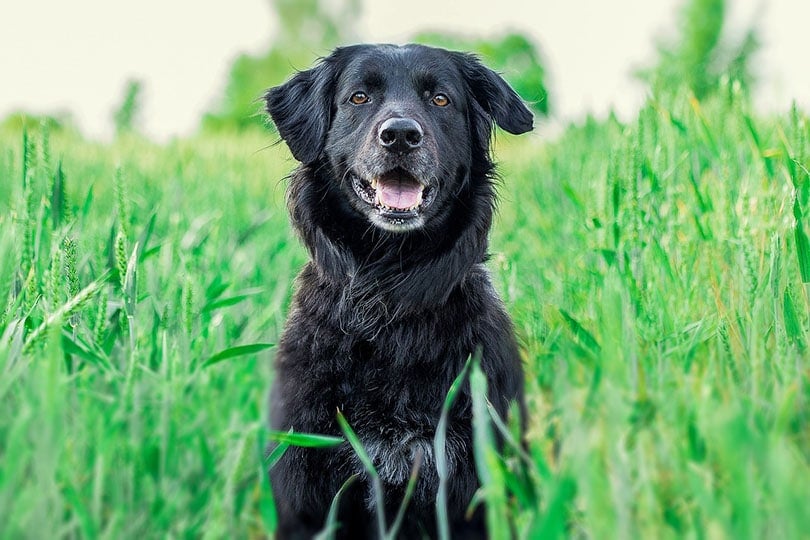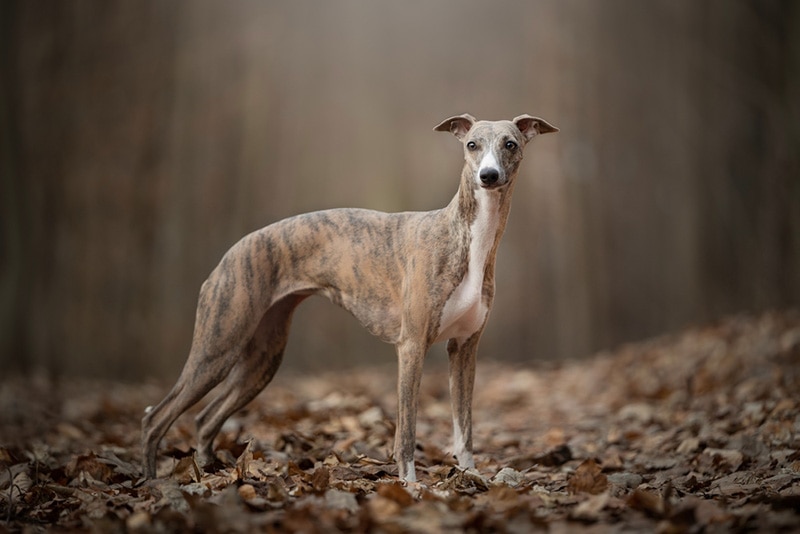Why Are My Dog’s Nipples Enlarged? 4 Vet-Reviewed Reasons

Updated on
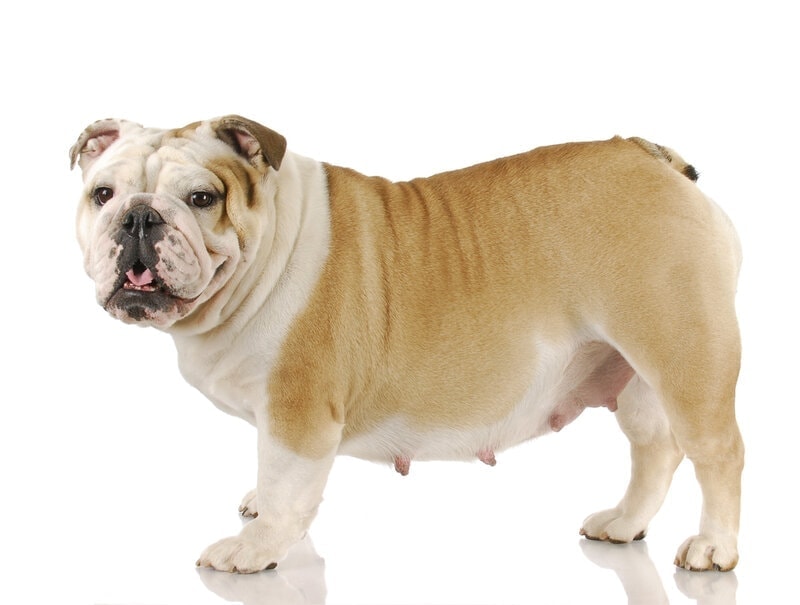
Dogs are mammals, and as such, female dogs feed their puppies the way that almost any other mammal does. They have mammary glands that produce milk, particularly in response to giving birth.
What does it mean when your dog isn’t pregnant, but their nipples begin to swell up? They might look red and swollen or become engorged, seeming like they are ready for puppies.
There are quite a few reasons this could happen, and many of them shouldn’t be a cause for alarm. If you think that the problem looks severe, though, then it is best to consult your vet or take your pup in for an evaluation.
The 4 Possible Reasons Your Dog’s Nipples Are Swollen
Female dogs with swollen mammary glands should be observed carefully, especially if this is out of the ordinary for your dog. Swollen dog nipples can even indicate a life-threatening medical condition and should be treated seriously.
1. Mastitis
Mastitis is one of the more common reasons that swollen nipples occur in a dog that has recently given birth. Your dog’s nipples will also be a bit swollen or enlarged from their normal condition once they become pregnant and nursing.
Mastitis might cause painful swelling in dog nipples beyond even the condition that they take on when they are pregnant. It occurs when your dog’s nipples become infected during their nursing period. They will get much more swollen and feel painful to touch. When they are suffering from mastitis, their milk might become polluted and be harmful to the puppies. It most often occurs within the first two weeks of delivering puppies.
There are two types of mastitis: galactostasis and acute septic mastitis. In galactostasis, the milk that collects in the mammary glands is what creates the painful infection. Acute septic mastitis means that bacteria enter the mammary gland and cause quite a painful infection.
- Refusal to nurse
- Discolored milk
- Blood in the milk
- Crying
- Lethargy
- Lumpy, pained nipples
- Dehydration
If you think that your dog might be suffering from mastitis, you must contact your vet. If left untreated, the condition can end up spreading quickly and becoming fatal.
2. Mammary Tumor
A scary possibility for swollen dog nipples is a tumor in the mammary tissue. It is similar to the way that humans can have breast cancer. A tumor in the mammary gland will usually only affect female dogs because it is not a type of tissue that male dogs typically develop.
A mammary tumor might occur in a mass growth around the dog’s nipples, although it can vary in its location. The color can also vary from red to purple. It can be either hard or soft.
It is best to continue taking your dog to the veterinarian once or twice a year so they can continue to give them physicals and check for any signs of cancer. If you see bleeding near the nipple, it can be from advanced cancer of the mammary gland.
There are quite a few types of cancers on the mammary gland, ranging from malignant to benign. A benign tumor will typically grow quite slowly and is smooth. A malignant tumor will often grow quickly but erratically and take on an irregular shape.
If you suspect that your dog is developing a tumor on their mammary glands, take them in for a checkup immediately.
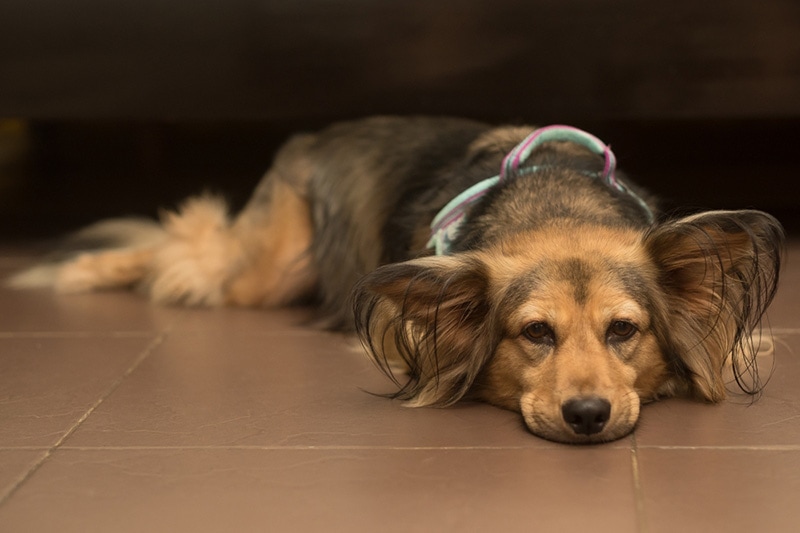
3. Typical Heat Cycles
There are natural reasons that your dog might have swollen nipples. If your dog hasn’t been spayed, she is more likely to go through a “heat” cycle.
A female dog has four stages of estrus. The proestrus and estrus stages are what breeders call “being in heat.” It will generally last for about 21 days. These stages are followed by diestrus and anestrus.
During the first two stages, their vulva will swell, and they might experience a bloody discharge. During these heat stages, the mammary glands will swell slightly in preparation for pregnancy. They might not reduce in size until after the second two stages of heat are finished, but this shouldn’t be a cause for alarm.
If you are unaccustomed to seeing a dog go through her heat stages or are concerned about something different this time, talk to your veterinarian about what to expect.
4. Pregnancy
There’s typically a noticeable difference between normal dog nipples and pregnant dog nipples, so if there is any chance that your dog is pregnant, then you should expect her nipples to swell. They will get much larger than they did during the heat stages. The gestation period lasts between 58 to 68 days, during which they will steadily get larger. Then, they will maintain their size until the puppies have been weaned off their milk for a while.
Conclusion
There are quite a few reasons that your dog could be experiencing swollen nipples. If you are ever concerned about something being out of the ordinary, though, you should contact your veterinarian. As a responsible dog owner, it is always better to be safe than sorry.
Related Reads:
- 10 Best Puppy Milk Replacers – Reviews & Top Picks
- How to Tell If a Dog Is in Heat (9 Signs to Look For)
Featured Image Credit by WilleeCole Photography, Shutterstock



